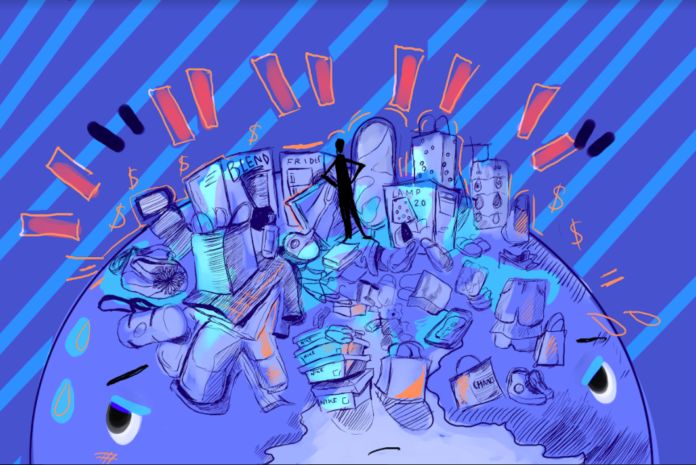As the West Coast of the United States is ablaze, Canada’s western provinces are left blanketed in smoke—both repercussions of the reality of climate change.
Burning fossil fuels is the main contributing factor to global climate change. Releasing carbon dioxide into our atmosphere at such a rapid rate is shifting us towards a warmer climate than our planet can handle.
In Oregon and California, these extreme temperatures are drawing more moisture into the atmosphere, causing thunderstorms, droughts and other severe weather and natural disasters—including the wildfire that continues to spread across the West Coast.
In Toronto alone, 15 civilians died due to “tropical nights”—evening temperatures that range above 20 degrees Celsius—in the month of July 2020, well above the average July death toll of four. Environment Canada estimates summers for the next 30 years will continue to bring us extreme and deadly heat if greenhouse gas emissions do not decrease.
Much debate surrounds the topic of who is to blame for its rapid increase. However, it is clear the primary contributor to climate change lies in the conscious decisions humans make to over-consume and support multinational corporations that do not promote sustainability.
It is the consumers that influence the system of expenditure, and thus the system of climate pollution.
Humans are the reason why the planet’s average surface temperature has increased nearly one degree Celsius in just 100 years, why Antarctica’s ice mass loss has tripled in the last decade, why sea levels have increased by 16 inches in the last two decades, and why firefighters are battling 106 blazes across western United States.
People have trapped themselves in a vicious cycle of over-consumption, tricking themselves into feeling the need to purchase the newest and nicest products from the most prestigious brands around the globe. This trap comes from a constant feeling of obsolescence or the fear of becoming outdated.
Obsolescence can manifest itself in one of two ways: perceived or planned. The former occurs when a customer believes they must buy the most up-to-date version of a product even if their old product works perfectly.
The latter describes the marketing tactic of purposely designing a product to lose efficiency over time, forcing consumers to repeatedly purchase the same product when they become too worn down for use. This begins the cycle of extraction, production, distribution, consumption and disposal.
A customer purchases a product. The manufacturer extracts the natural resources needed. It is shipped to a doorstep or store. The product is used, and then it is thrown away. This results in a constant source of air and water pollution, destroying habitats and decreasing our level of oxygen.
Mass corporations would not produce and pollute at such high rates if there was not such a high demand for products from their customers. Therefore, the blame cannot only be placed on big businesses.
Many may also look to governments to regulate climate change-inducing consumption. However, I do not believe the government is able to control this widespread desire to consume. This is a self-driven motivation that, while destructive, would only be slightly curbed if governments were to force corporations to use solely sustainable material—as even the most sustainable products can still create waste when over-consumed.
Consumers make the conscious decision to purchase items from companies that do not practise sustainability, prioritizing cheap prices over green initiatives. We feed our money into corporations that are already at the top of the food chain, instead of supporting smaller companies that are striving to reduce climate change by producing long-lasting products through sustainable means.
The cycle of citizen-driven over-consumption is deadly. It will continue to contribute to the deaths of both humans and other organisms if the population fails to start making conscious choices about what they buy, use and throw away.
Featured graphic by Sara Mizannojehdehi.






